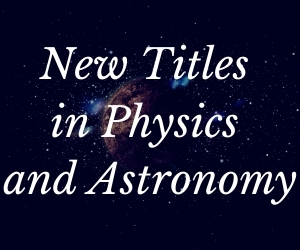System Upgrade on Tue, May 28th, 2024 at 2am (EDT)
Existing users will be able to log into the site and access content. However, E-commerce and registration of new users may not be available for up to 12 hours.For online purchase, please visit us again. Contact us at customercare@wspc.com for any enquiries.
The detection of gravitational waves in 2015 has been hailed a scientific breakthrough and one of the most significant scientific discoveries of the 21st century. Gravitational-wave physics and astronomy are emerging as a new frontier in understanding the universe.
Advanced Interferometric Gravitational-Wave Detectors brings together many of the world's top experts to deliver an authoritative and in-depth treatment on current and future detectors. Volume I is devoted to the essentials of gravitational-wave detectors, presenting the physical principles behind large-scale precision interferometry, the physics of the underlying noise sources that limit interferometer sensitivity, and an explanation of the key enabling technologies that are used in the detectors. Volume II provides an in-depth look at the Advanced LIGO and Advanced Virgo interferometers, as well as examining future interferometric detector concepts. This two-volume set will provide students and researchers the comprehensive background needed to understand gravitational-wave detectors.
Sample Chapter(s)
Preface
Chapter 1: Gravitational waves and their interactions with detectors
Contents:
- Preface
- Volume I: Essentials of Gravitational-Wave Detectors:
- Part A: Gravitational Waves and Their Interactions with Detectors:
- Gravitational Waves and Their Interactions with Detectors (Rainer Weiss)
- Interferometer Configuration and Response (Seiji Kawamura and Masayuki Nakano)
- Global Detector Networks (Marica Branchesi and Stanley Whitcomb)
- Part B: Understanding Fundamental Noises:
- Quantum Noise (David E McClelland, Nergis Mavalvala, and Roman Schnabel)
- Thermal Noise (Sheila Rowan)
- Seismic Noise and Gravity-Gradient Noise (Jo van den Brand)
- Non-Fundamental Noise Sources (Stefan Ballmer and Bas Swinkels)
- Part C: Enabling Technologies for Gravitational-Wave Detectors:
- Interferometer Control (Mathew Evans and Nicholas Brown)
- Fabry–Perot Cavities and Gaussian Beams (Masaki Ando and Matteo Barsuglia)
- High-Power Lasers for Gravitational-Wave Detectors (Jesper Munch)
- Electro-Optic Modulators and Photodiodes (Volker Quetschke)
- Simulation Methods for Advanced Interferometers (Andreas Freise and Daniel Brown)
- Vacuum Technology (Michael E Zucker)
- Diagnostic Methods for Gravitational-Wave Detectors (Jessica McIver, Thomas J Massinger, Florent Robinet, Joshua R Smith, and Marissa Walker)
- Volume II: Advanced LIGO, Advanced Virgo and Beyond:
- Part D: Detector Subsystems:
- Seismic Isolation in Advanced GW Detectors (Giovanni Losurdo and Brian Lantz)
- Test Mass Suspensions (Norna A Robertson and Ettore Majorana)
- Pre-Stabilized Lasers (Benno Willke)
- The Input Optics System (Guido Mueller and Eric Genin)
- Fused Silica, Optics and Coatings (Gregory Harry and GariLynn Billingsley)
- Length Sensing and Control (Hartmut Grote)
- Alignment Sensing and Control (Lisa Barsotti)
- Thermal Adaptive Optics (Aidan F Brooks and Viviana Fafone)
- Part E: Realizing a Complete Detector:
- System Design and Trade-Offs (Peter K Fritschel)
- Planning, Managing and Executing the Design and Construction of Advanced LIGO (David H Shoemaker)
- Integrated Detector Commissioning (Rana X Adhikari)
- Part F: Future Detectors:
- Ideas for 2.5G and 3G Interferometric Detectors (Michele Punturo and Harald Lück)
- Cryogenic Interferometry (Kazuaki Kuroda)
- Index
Readership: Graduate students and researchers interested in gravitational waves and experimental physics.



























